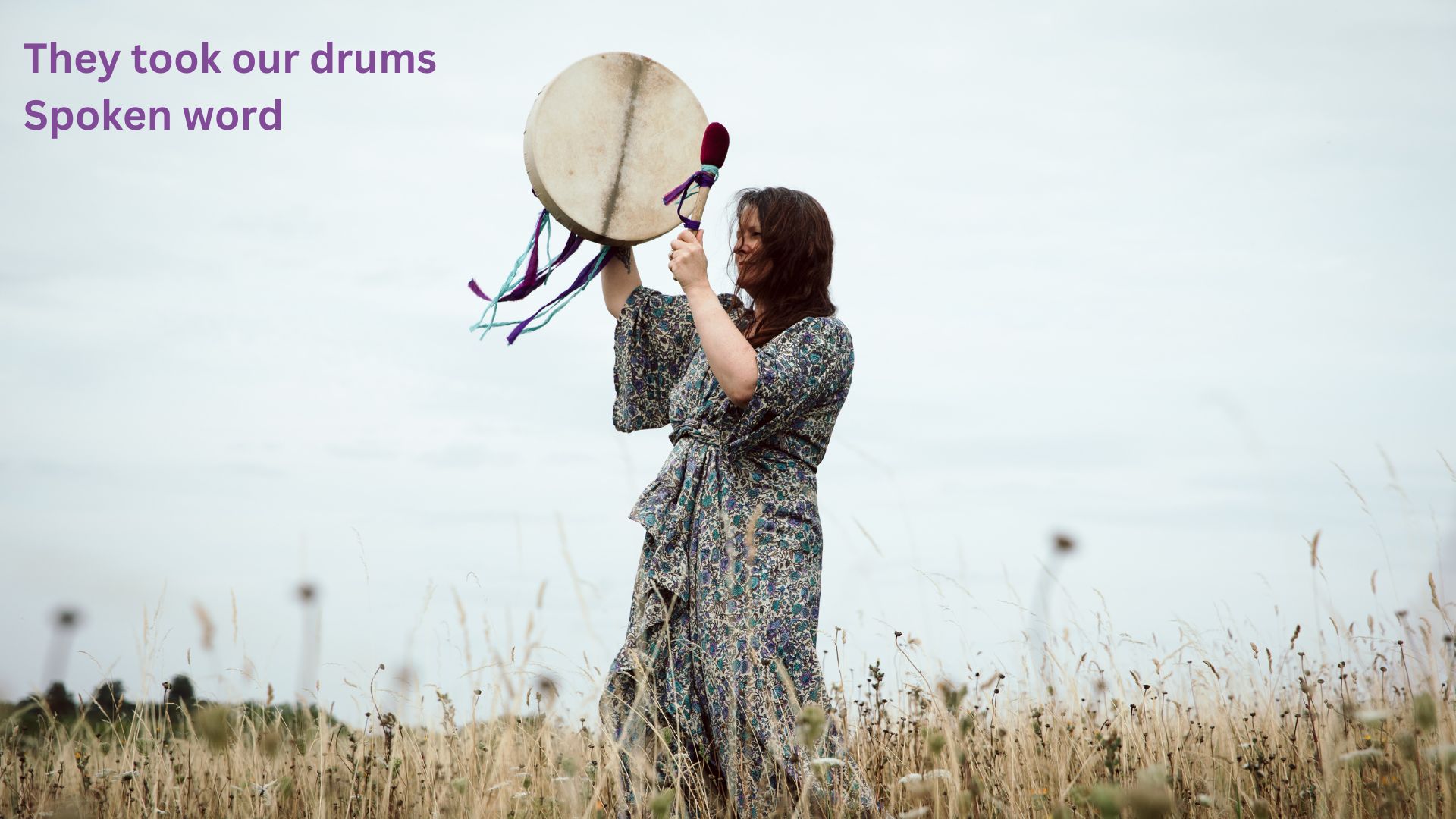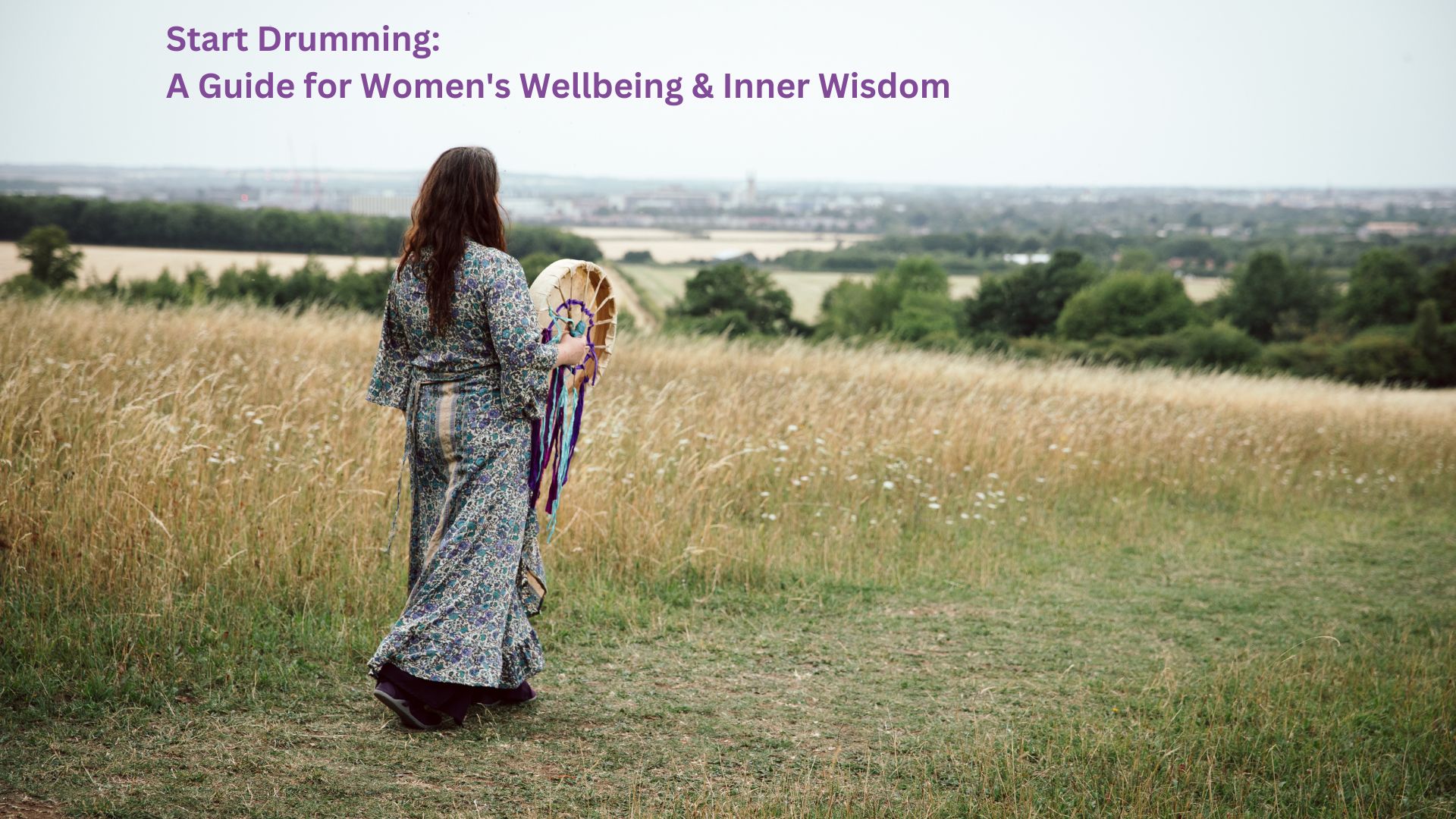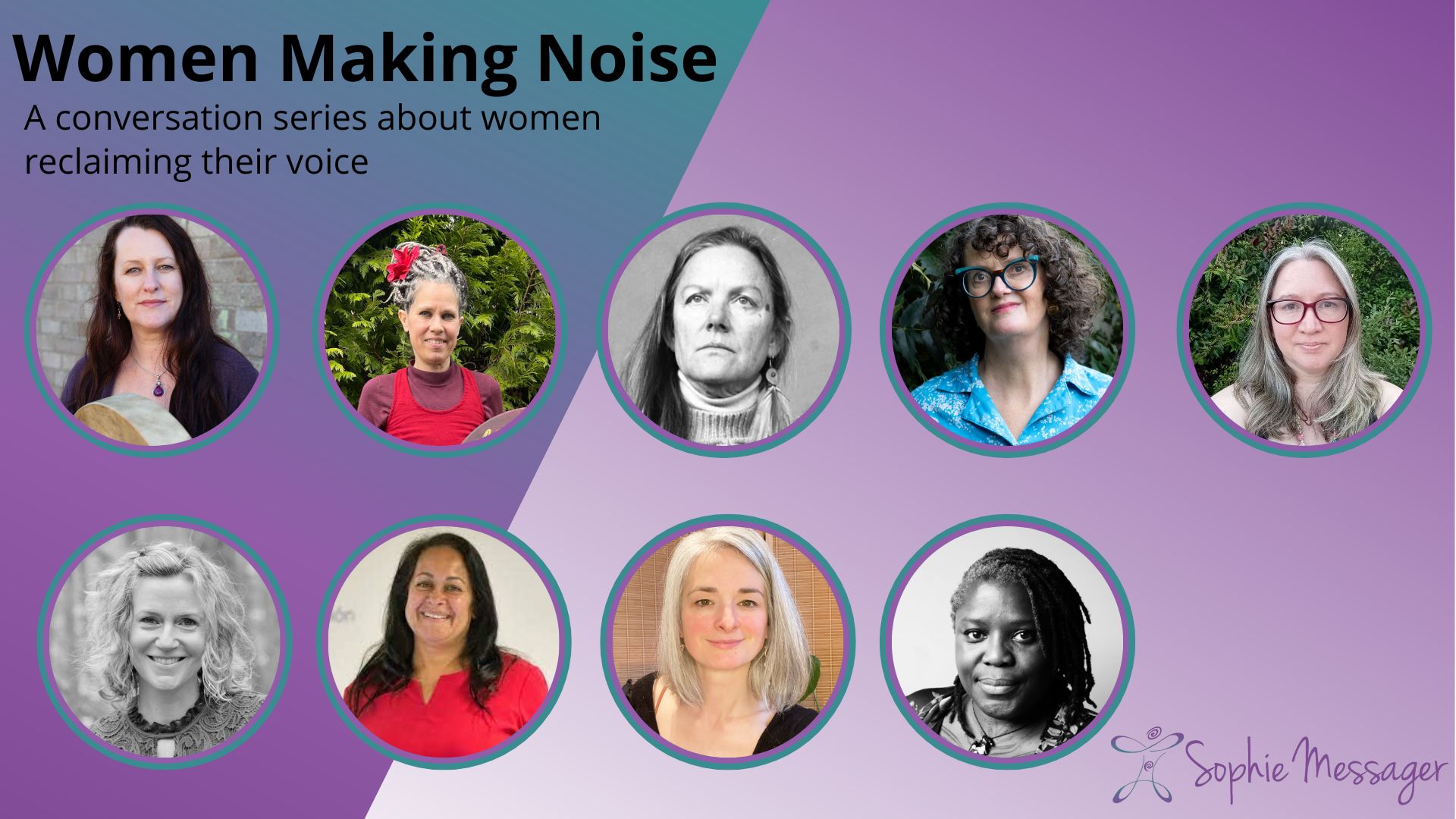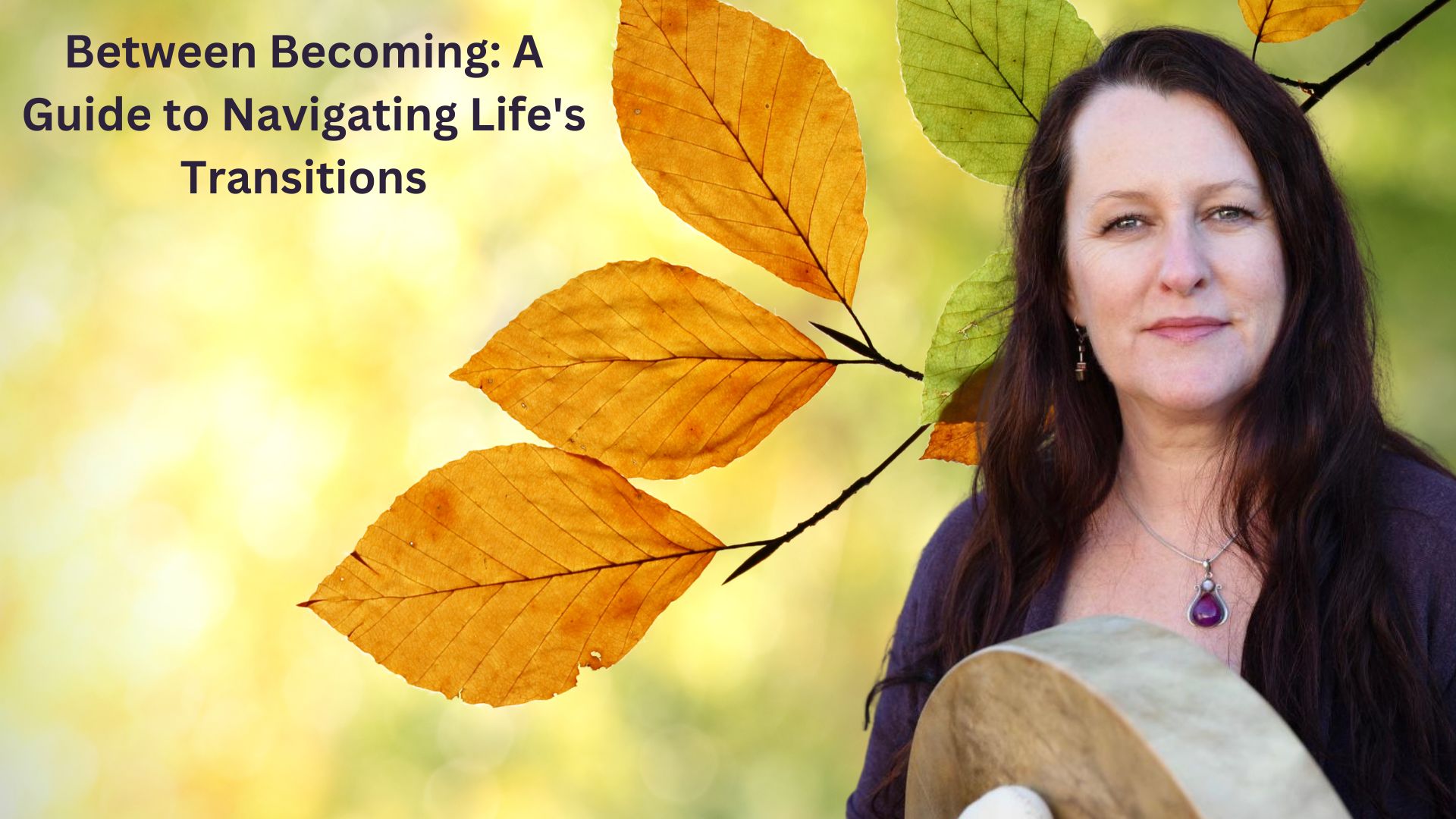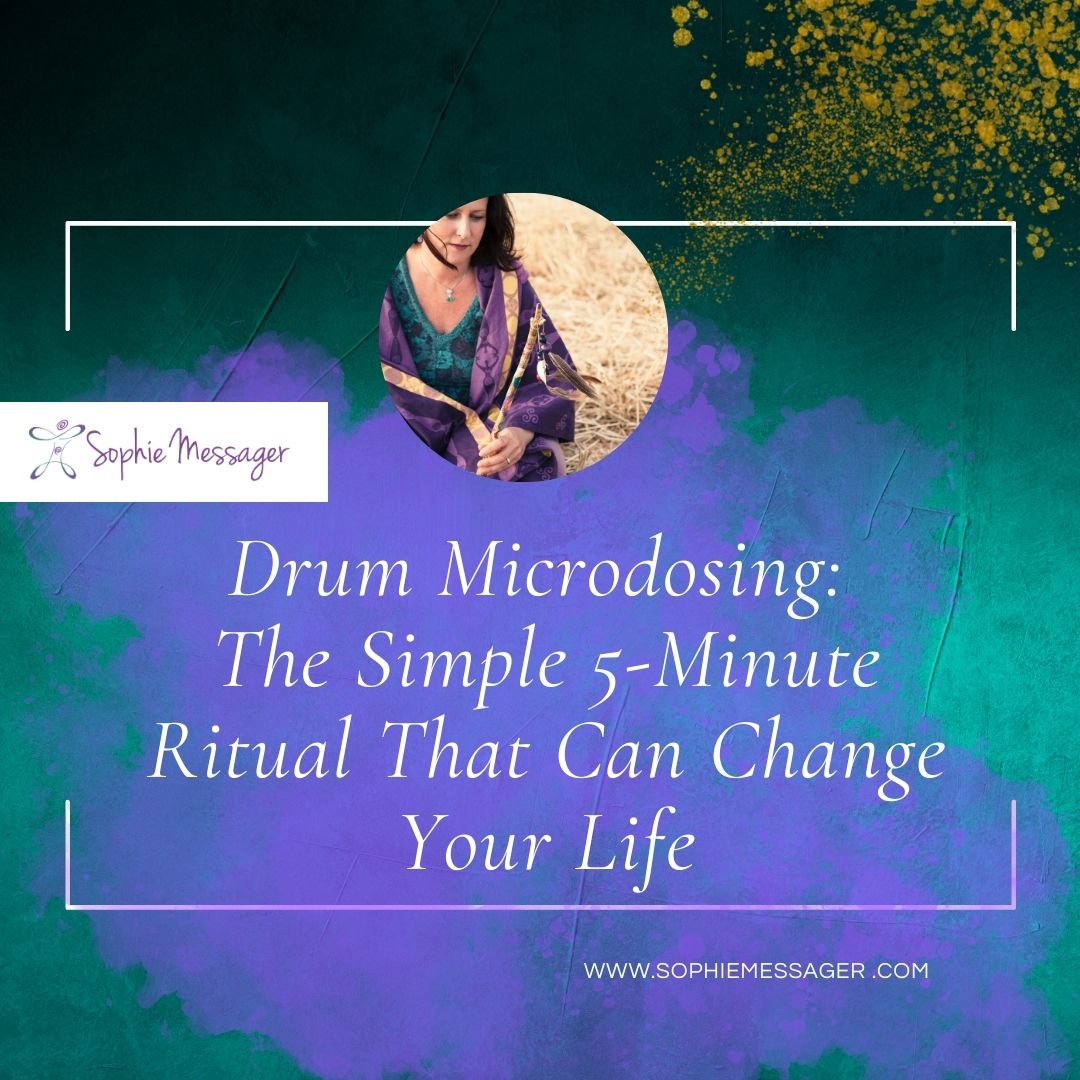Why the Drum Reviews Your Year Better Than Bullet Points Do
It’s that time of year again.
You know the drill: grab your journal, make yourself a cup of tea, and write down your reflections on 2025.
What went well?
What didn’t?
What did you learn?
What are you grateful for?
What will you do differently in 2026?
And if you’re like most self-aware women, you’ll fill pages with thoughtful, articulate insights about your year.
You’ll make beautiful lists. You’ll identify patterns. You’ll set intentions for next year that sound really, really good.
Then you’ll close the journal, return to your life, and somehow… nothing actually shifts.
You’re trying to access body-held wisdom through the thinking mind.
And your thinking mind is the last place that knows what this year was really about.
Your Nervous System Has Been Keeping The Score
While you were managing 2025, your body was tracking everything:
- Every transition that rattled your sense of identity
- Every loss you tried to process while still showing up for everyone
- Every moment of overwhelm you pushed through because you had to
- Every boundary you crossed or failed to hold
- Every time you felt joy and second-guessed it
- Every rage you swallowed
- Every grief you postponed
Your nervous system has a detailed record of this year. But it doesn’t speak in bullet points.
It speaks in:
- Tension patterns in your shoulders and jaw
- The way your breath shallows when you think about certain topics
- The exhaustion that sleep doesn’t touch
- The restlessness that has nowhere to go
- The numbness that protects you from feeling too much
Journalling exercises asks your thinking mind to report on what your body experienced.
It’s like asking someone who watched a movie through a window to write the review. They saw some things. They missed the audio. They have theories. But they didn’t experience it.
Your body experienced 2025. Your mind just watched.
Why Cognitive Reflection Keeps You Safe (And Stuck)
The thinking mind is brilliant at many things:
- Making sense of complexity
- Identifying patterns
- Planning and strategizing
- Sounding articulate and insightful
But it’s also brilliant at:
- Keeping you comfortable
- Avoiding what’s actually true
- Controlling the narrative
- Protecting you from feelings you’re not ready to feel
When you sit down with your journal and ask “what did 2025 teach me?”, your thinking mind immediately curates the answer.
It gives you the lessons you’re READY to hear.
The ones that make sense.
The ones that don’t threaten your self-concept.
The ones that feel manageable.
It won’t tell you:
- The grief you’re still not acknowledging
- The rage that’s calcified into resentment
- The pattern you keep repeating because facing it would mean changing everything
- The gift that’s sitting right in front of you that you can’t see because it doesn’t match your story
Your thinking mind loves you. It’s trying to keep you safe. But safety does not equal truth.
What Happens When You Bypass the Thinking Mind
This is where drumming becomes revolutionary.
When you drum, or when you listen to drumming, especially in a guided journey with intention, something neurologically fascinating happens:
Your brainwaves shift from beta (normal waking consciousness) to alpha and/or theta (meditative/trance state).
Alpha and theta are where:
- The analytical mind quiets
- The body’s wisdom becomes accessible
- Symbols and images emerge instead of words
- Truth that’s been stored somatically can surface
- You access knowing that thinking can’t reach
It’s the same state you’re in during REM sleep, deep meditation, or moments of creative flow.
In this altered state, your body can finally TELL you what 2025 was about.
Not what you think it should have been about.
Not the sanitized version.
Not the narrative that makes sense.
The actual, embodied, messy, often surprising truth.
Why This Matters for How You Move Forward
The thing is about unacknowledged truth: It doesn’t go away just because you wrote a different story in your journal.
It stays in your body:
- As tension
- As exhaustion
- As patterns you can’t quite break
- As vague dissatisfaction with your life
- As a sense that something’s missing but you can’t name what
And then you carry all of that into 2026.
You set beautiful intentions based on the curated story.
You make plans based on what you THINK happened.
You commit to changes that don’t address what’s actually asking to shift.
And then you wonder why nothing actually changes.
The body truth you bypassed? It’s still running the show.
The Neuroscience of Why This Works
Let me put on my PhD hat for a moment.
The thinking mind lives primarily in the prefrontal cortex : planning, analysing, narrating.
Body wisdom lives in:
- The limbic system (emotions, memory)
- The brain stem (survival responses, core regulation)
- The vagus nerve (gut feelings, somatic knowing)
These systems don’t speak English.
They don’t respond to “tell me what you learned this year.”
But they DO respond to:
- Rhythm (the drum)
- Repetition (the steady beat)
- Resonance (vibration in the body)
- Trance states (alpha and theta brainwaves)
- Symbolic language (images, metaphors, sensations)
When you drum with intention, you’re literally creating the neurological conditions for non-verbal knowing to surface.
You’re giving your body permission to speak in its own language.
Your body has been waiting to tell you things your mind wasn’t ready to hear.
This Isn’t About Drumming Being “Better” Than Journaling
Both have value. Both are powerful. Both have their place.
But they serve different purposes:
Journaling is phenomenal for:
- Processing thoughts and making meaning
- Tracking patterns over time
- Articulating insights once you’ve HAD them
- Planning and strategising
- Integration work
Drumming is phenomenal for:
- ACCESSING what needs to be known
- Bypassing the defensive mind
- Letting the body speak
- Receiving insight rather than generating it
- Dropping into truth that thinking obscures
The most powerful practice? Use both.
Drum to ACCESS the truth. Journal to INTEGRATE what came through.
Not the other way around.
How to Actually Do This
If you’re reading this thinking “okay, I want to try this, but I don’t know how” – start simple.
You don’t need to be a “drummer.”
You don’t need a fancy drum.
You don’t need to know what you’re doing.
Here’s a basic practice:
- Set an intention: “Show me what 2025 was really about” or “What gift am I meant to receive from this year?”
- Find a rhythm: Just a steady beat. Doesn’t have to be complex. Think heartbeat.
- Drum for 5-10 minutes: Keep the rhythm going. Close your eyes. Let yourself drop in.
- Notice what comes: Images, sensations, memories, emotions, knowing. Don’t judge it. Just notice.
- Journal afterward: Not to make sense of it. Just to capture what came through.
That’s it.
The sophistication isn’t in the technique. It’s in the willingness to let your body speak.
Or Let Me Guide You
This is exactly why I’m offering a free drum journey workshop next week.
Not because I think you need another thing to do. But because I KNOW that bullet-point reflection isn’t touching what 2025 actually asked of you.
(and frankly because I find drumming a whole lot more appealing and fun than sitting down to write)
We’ll do two guided drum journeys together:
Journey 1: The Spiral – Walking back through 2025 with a guide who shows you what actually happened (not what you think happened). You’ll receive a gift or lesson.
Journey 2: Meeting Your Future Self – Traveling forward to December 2026 to meet the transformed version of you. She’ll show you what you need to know right now.
Between journeys: journaling, sharing, and space to actually FEEL what this year was about.
No drum required. Just curiosity and willingness.
Not because I’m promising magic. But because your body already knows what you need to know.
The drum just helps you hear it.
The Invitation
What if 2025 has a gift for you that you can’t see yet?
What if there’s wisdom in your body that your thinking mind keeps bypassing?
What if the reason you feel stuck isn’t because you haven’t reflected ENOUGH, but because you’ve been reflecting in the wrong language?
Your body knows.
Put down the journal.
Pick up the drum.
Let it speak.
Join my FREE workshop Review Your Year, Reclaim Your Vision: A Free Drum Journey Workshop on Wednesday the 17th of December 2025. No experience necessary.
Tell me: What did your journal tell you about 2025? And what is your body trying to tell you that you haven’t been able to hear yet?

